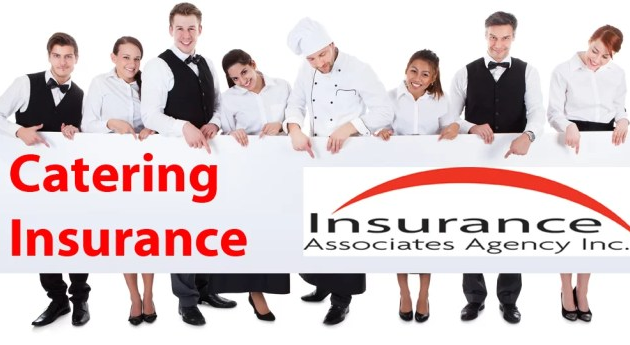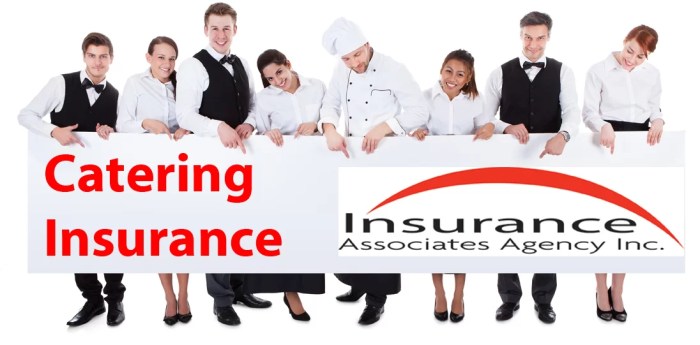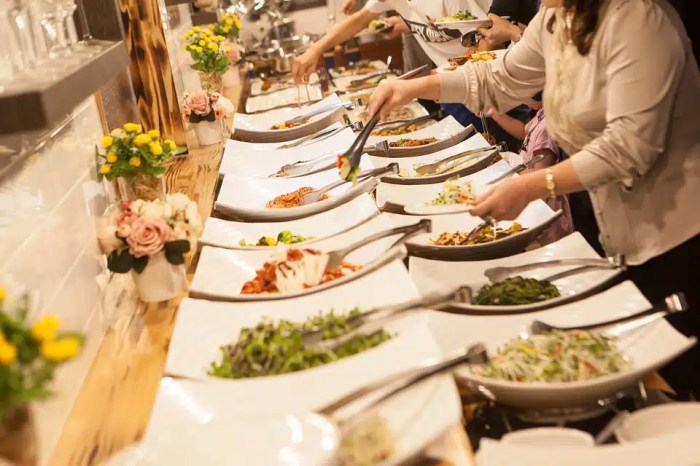
The culinary world is a vibrant tapestry of flavors and experiences, but running a successful catering business demands more than just exceptional recipes and skilled chefs. A crucial, often overlooked, ingredient for long-term prosperity is comprehensive insurance coverage. This guide delves into the multifaceted world of catering business insurance, equipping you with the knowledge to protect your investment and navigate potential risks.
From understanding the various types of policies available – general liability, product liability, and commercial auto insurance – to navigating the complexities of claims and legal considerations, we’ll provide a clear and concise overview. We’ll also explore factors influencing insurance costs, helping you make informed decisions about your coverage and minimize premiums.
Factors Affecting Insurance Costs

Securing the right catering business insurance is crucial for protecting your business from potential financial losses. However, the cost of this insurance can vary significantly depending on several key factors. Understanding these factors can help you make informed decisions and potentially reduce your premiums. This section will explore the primary elements that influence the price of your catering insurance policy.
Business Size and Revenue
The scale of your catering operation significantly impacts your insurance premium. Larger businesses with higher annual revenues generally face higher premiums because they handle more food, serve more clients, and consequently, have a greater potential for liability claims. For instance, a large-scale event catering company serving thousands of people annually will likely pay more than a small home-based business catering to a limited clientele. This is due to the increased exposure to potential risks associated with larger operations. The insurer assesses the volume of potential claims based on the size and scope of your business activities.
Location of Business Operations
The geographical location of your catering business also plays a crucial role in determining insurance costs. Areas with higher crime rates, a greater frequency of natural disasters (like hurricanes or floods), or a higher cost of living generally result in higher insurance premiums. For example, a catering business operating in a high-crime urban area might face higher premiums due to an increased risk of theft or vandalism compared to a business operating in a rural area with lower crime rates. Similarly, businesses in areas prone to natural disasters will need to factor in the increased risk of property damage or business interruption.
Type of Catering Services Offered
The specific types of catering services you provide influence your insurance premium. Offering more complex services, such as those involving specialized equipment or handling of potentially hazardous foods, may increase your risk profile and thus your premium. For instance, a business specializing in elaborate wedding cakes might face higher premiums than one offering simple box lunches, due to the increased potential for damage or liability related to complex food preparation and transportation. Similarly, businesses that handle large quantities of raw meat or seafood will likely face higher premiums than those focused on vegetarian or pre-packaged meals.
Claims History
A business’s claims history is a major factor in determining future insurance premiums. A history of frequent or significant claims will almost certainly lead to higher premiums, as it demonstrates a higher risk to the insurer. Conversely, a clean claims history reflects responsible risk management and can lead to lower premiums or even discounts. Insurers utilize actuarial data to assess the risk associated with each business, and a history of successful risk mitigation is positively reflected in the pricing. Maintaining detailed records of all safety procedures and incident reports is essential.
Risk Management Strategies to Reduce Premiums
Implementing effective risk management strategies can significantly reduce your catering business insurance premiums. These strategies demonstrate to insurers that you are proactively minimizing potential risks. Examples include investing in robust food safety training for your staff, maintaining meticulous records of food handling and preparation, and implementing comprehensive safety protocols for transportation and event setup. Further, investing in high-quality equipment and ensuring regular maintenance will also contribute to reducing the likelihood of accidents or equipment failures. Properly insured vehicles and employing thorough background checks on employees are additional risk mitigation measures that positively impact insurance costs.
Understanding Policy Coverage

Choosing the right catering business insurance policy involves carefully reviewing the coverage details. A comprehensive policy protects your business from various risks, offering financial security in unforeseen circumstances. Understanding the different types of coverage and their limitations is crucial for making an informed decision.
A typical catering business insurance policy bundles several key coverages to address common risks. The specific inclusions can vary depending on the insurer and the policy’s chosen level of coverage, so always check the policy document carefully.
General Liability Coverage
This is a fundamental component of most catering insurance policies. General liability insurance protects your business against claims of bodily injury or property damage caused by your operations. For example, if a guest trips and falls at an event you’re catering, resulting in injury and medical expenses, general liability would cover the costs. Similarly, if your equipment accidentally damages a client’s property, this coverage would help mitigate the financial impact.
Product Liability Coverage
This coverage addresses claims arising from foodborne illnesses or other issues related to the food you serve. If a customer suffers food poisoning after consuming food prepared by your catering business, product liability insurance would help cover medical expenses, legal fees, and potential settlements. This is especially important given the potential severity and wide-ranging consequences of food contamination incidents.
Commercial Auto Coverage
If your catering business uses vehicles to transport food, equipment, or staff, commercial auto insurance is essential. This coverage protects you against accidents involving your vehicles, including damage to the vehicle itself, injuries to others, and property damage caused by your vehicle. For example, if a company vehicle is involved in a collision while transporting catering equipment, this coverage would help with repair costs and potential liability claims.
Property Coverage
This covers damage to your business property, such as your kitchen equipment, catering supplies, and any rented space used for food preparation or storage. This could include damage caused by fire, theft, vandalism, or natural disasters. For instance, if a fire damages your commercial kitchen, property insurance would help cover the cost of replacing or repairing the damaged equipment.
Exclusions from Standard Coverage
It’s important to understand that standard catering business insurance policies typically exclude certain events. These exclusions are often clearly Artikeld in the policy documents. For example, intentional acts, employee dishonesty, and pre-existing conditions are usually not covered. Specific exclusions can vary greatly depending on the insurer and the policy details.
Interpreting Policy Wording
Policy wording can often be complex and legalistic. It’s crucial to carefully read your policy document, paying particular attention to definitions of terms, coverage limits, and exclusions. If you encounter any unclear sections, don’t hesitate to contact your insurance provider for clarification. Understanding the specific terms and conditions of your policy ensures you are aware of the extent of your protection and what is, and is not, covered.
Final Review

Protecting your catering business is an investment in its future. By understanding the different types of insurance available, carefully selecting a provider, and proactively managing risks, you can mitigate potential liabilities and focus on what you do best: creating unforgettable culinary experiences. Remember, a well-structured insurance policy isn’t just a safety net; it’s a strategic tool that empowers your business to thrive.
Question Bank
What is the difference between general liability and product liability insurance?
General liability covers bodily injury or property damage caused by your business operations (e.g., a guest tripping at your event). Product liability covers injury or illness caused by the food you serve (e.g., food poisoning).
Do I need workers’ compensation insurance if I only have a few employees?
Most jurisdictions require workers’ compensation insurance if you have employees, regardless of the number. Check your local regulations for specifics.
How often should I review my catering business insurance policy?
It’s recommended to review your policy annually, or whenever there are significant changes in your business operations (e.g., expanding services, hiring more employees, changing locations).
What happens if I fail to renew my insurance policy?
Operating without adequate insurance leaves your business vulnerable to significant financial losses in the event of an incident. It could also lead to legal repercussions.
Can I get insurance if my business has had previous claims?
Yes, but your premiums might be higher. Openly disclosing your claims history is crucial for accurate quote generation.